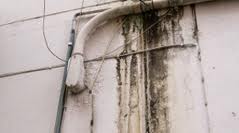 Mold is a common, irritating and occasionally dangerous contaminant and it’s presence can often be the cause of a variety of respiratory health issues, odors and even structural damage. The most important thing you can do is to pay attention to indoor air moisture levels and understand that air humidity id the key to managing mold. When you have a flood or can see the water in a area, it is easy to figure out where the mold will probably grow but since water can be both a liquid and a gas, water vapors can also cause mold and be tougher to prevent. You can go to the website to find more information about it. Water vapor can be the result of steam, such as in bathrooms, kitchens and other utility areas, it can be produced by using mechanical humidifiers, or it can simply be humid air that seeps into buildings from outside. You can read here about what to do when such a situation arises.
Mold is a common, irritating and occasionally dangerous contaminant and it’s presence can often be the cause of a variety of respiratory health issues, odors and even structural damage. The most important thing you can do is to pay attention to indoor air moisture levels and understand that air humidity id the key to managing mold. When you have a flood or can see the water in a area, it is easy to figure out where the mold will probably grow but since water can be both a liquid and a gas, water vapors can also cause mold and be tougher to prevent. You can go to the website to find more information about it. Water vapor can be the result of steam, such as in bathrooms, kitchens and other utility areas, it can be produced by using mechanical humidifiers, or it can simply be humid air that seeps into buildings from outside. You can read here about what to do when such a situation arises.
Some Facts about Mold
- Molds can be found growing just about anywhere, and on and within any material as long as moisture is present
- Mold spores are constantly circulating in the air and there is no practical way to eliminate all mold and mold spores indoors
- Mold does not require liquid standing water to grow. High relative humidity can grow mold bit itself.
- Mold comes in many varieties and can cause minor and severe respiratory problems, discoloration of materials, odor problems, and building material deteriorization
What You Need to Know About Water Vapor
- If a unit of air contains half of the water vapor it can hold, it is said to be at 50 percent relative humidity (RH) or greater.
- As the air temperature decreases, so too does the ability of air to hold water vapor.
- As the temperature goes down, the water vapor saturation point is reached sooner, and the water vapor condenses from gas to liquid.
- The highest indoor RH can always be found next to the coldest surface. That’s where condensation will happens first. You can try this company as they can explain why mold may be growing in one area but not in another nearby area. Gaps in insulation or exterior cracks in a building can allow cold air inside, causing condensation and a breeding ground for mold on an inner wall surface.
Air Circulation is Key
- Good circulation distributes air more evenly can help to dry out damp areas.
- Forced air heating, ventilation and air conditioning (HVAC) systems and ceiling fans both can have positive impacts on reducing mold.
- Sometimes simply rearranging furniture can impact air flow patterns.
Prevent Mold Before it Becomes a Real Problem
The cost of mold cleanup and remediation can be quite expansive and any cleanup is likely to be disruptive to the workplace. If your property has been flooded, it is advised to conduct flood cleaning and get mold inspections straight away before the damages get worse and to prevent mold growth. Business owners should also know that alleged mold exposure cases involving employees can be contentious and costly and cause negative press and that can have a negative impact on employee morale and future sales. If mold fails to be prevented, then call a mold removal service immediately.
Contact Us (859-689-9222) for a Free Consultation!
—
 About Environmental Risk Management
About Environmental Risk Management
1-Source Turnkey Environmental & Safety Services
Since 1989, Environmental Risk Management has been providing responsive, client focused 1-source turnkey solutions for a wide variety of environmental safety challenges. With our experience and extensive network of diverse internal and external resources, our clients trust us to provide quality Environmental & Safety Services for their businesses. Our environmental compliance specialists recognize the need to consult with private industry and the business community and our goal is to ensurer our client’s are complying with complex environmental regulations and minimizing their environmental liabilities.
> Learn More
